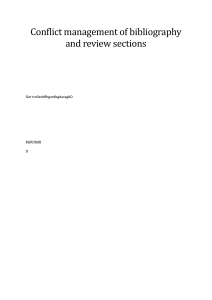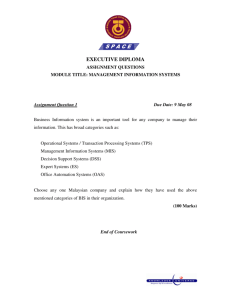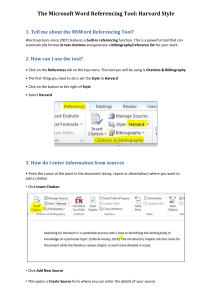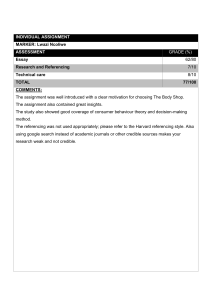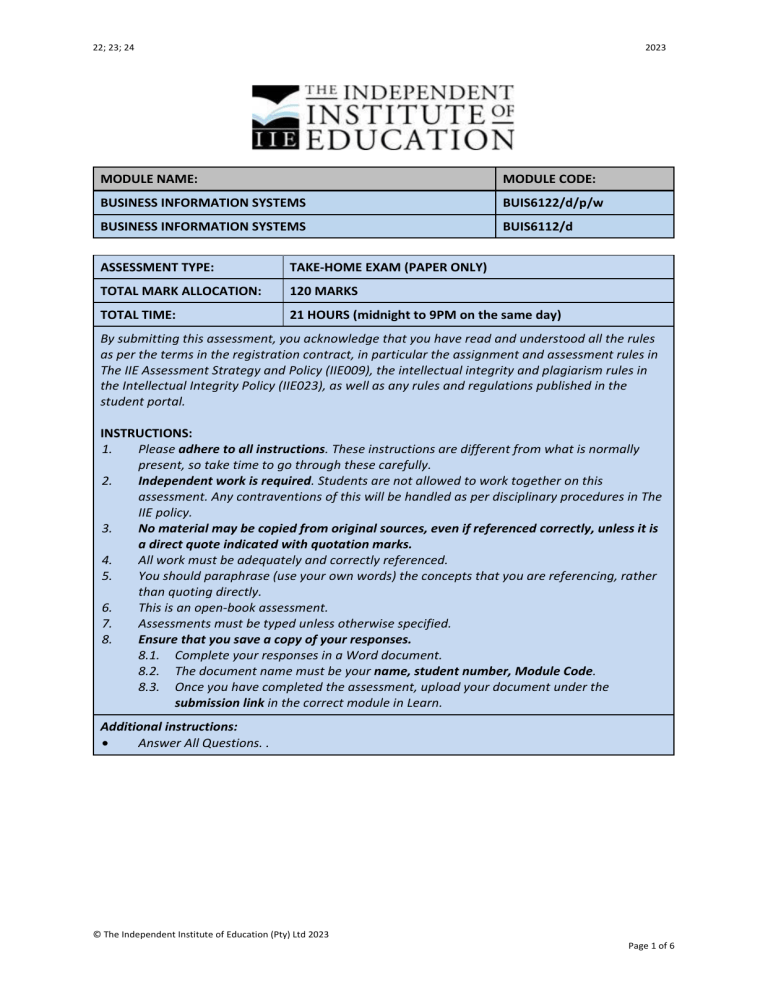
22; 23; 24 2023 MODULE NAME: MODULE CODE: BUSINESS INFORMATION SYSTEMS BUIS6122/d/p/w BUSINESS INFORMATION SYSTEMS BUIS6112/d ASSESSMENT TYPE: TAKE-HOME EXAM (PAPER ONLY) TOTAL MARK ALLOCATION: 120 MARKS TOTAL TIME: 21 HOURS (midnight to 9PM on the same day) By submitting this assessment, you acknowledge that you have read and understood all the rules as per the terms in the registration contract, in particular the assignment and assessment rules in The IIE Assessment Strategy and Policy (IIE009), the intellectual integrity and plagiarism rules in the Intellectual Integrity Policy (IIE023), as well as any rules and regulations published in the student portal. INSTRUCTIONS: 1. Please adhere to all instructions. These instructions are different from what is normally present, so take time to go through these carefully. 2. Independent work is required. Students are not allowed to work together on this assessment. Any contraventions of this will be handled as per disciplinary procedures in The IIE policy. 3. No material may be copied from original sources, even if referenced correctly, unless it is a direct quote indicated with quotation marks. 4. All work must be adequately and correctly referenced. 5. You should paraphrase (use your own words) the concepts that you are referencing, rather than quoting directly. 6. This is an open-book assessment. 7. Assessments must be typed unless otherwise specified. 8. Ensure that you save a copy of your responses. 8.1. Complete your responses in a Word document. 8.2. The document name must be your name, student number, Module Code. 8.3. Once you have completed the assessment, upload your document under the submission link in the correct module in Learn. Additional instructions: • Answer All Questions. . © The Independent Institute of Education (Pty) Ltd 2023 Page 1 of 6 22; 23; 24 2023 Referencing Rubric Providing evidence based on valid and referenced academic sources is a fundamental educational principle and the cornerstone of high-quality academic work. Hence, The IIE considers it essential to develop the referencing skills of our students in our commitment to achieve high academic standards. Part of achieving these high standards is referencing in a way that is consistent, technically correct and congruent. This is not plagiarism, which is handled differently. Poor quality formatting in your referencing will result in a penalty of a maximum of ten percent being deducted from the percentage awarded, according to the following guidelines. Please note, however, that evidence of plagiarism in the form of copied or uncited work (not referenced), absent reference lists, or exceptionally poor referencing, may result in action being taken in accordance with The IIE’s Intellectual Integrity Policy (0023). Required: Technically correct referencing style Consistency • The same referencing format has been used for all in-text references and in the bibliography/reference list. Technical correctness • Referencing format is technically correct throughout the submission. • Position of the reference: a reference is directly associated with every concept or idea. • For example, quotation marks, page numbers, years, etc. are applied correctly, sources in the bibliography/reference list are correctly presented. Congruence between in-text referencing and bibliography/ reference list • All sources are accurately reflected and are all accurately included in the bibliography/ reference list. In summary: the recording of references is accurate and complete. Markers are required to provide feedback to students by indicating (circling/underlining) the information that best describes the student’s work. Minor technical referencing errors: 5% deduction from the overall percentage – the student’s work contains five or more errors listed in the minor error’s column in the table below. Major technical referencing errors: 10% deduction from the overall percentage – the student’s work contains five or more errors listed in the major error’s column in the table below. If both minor and major errors are indicated, then 10% only (and not 5% or 15%) is deducted from the overall percentage. The examples provided below are not exhaustive but are provided to illustrate the error Minor errors in technical correctness of referencing style Deduct 5% from percentage awarded Minor inconsistencies. • The referencing style is generally consistent, but there are one or two changes in the format of in-text referencing and/or in the bibliography. • For example, page numbers for direct quotes (in-text) have been provided for one source, but not in another instance. Two book chapters (bibliography) have been referenced in the bibliography in two different formats. Generally, technically correct with some minor errors. • The correct referencing format has been consistently used, but there are one or two errors. • Concepts and ideas are typically referenced, but a reference is missing from one small section of the work. • Position of the references: references are only given at the beginning or end of every paragraph. • For example, the student has incorrectly presented direct quotes (in-text) and/or book chapters (bibliography/reference list). Generally, congruence between the in-text referencing and the bibliography/ reference list with one or two errors. • There is largely a match between the sources presented in-text and the bibliography. • For example, a source appears in the text, but not in the bibliography/ reference list or vice versa. In summary, at least 80% of the sources are correctly reflected and included in a reference list. Major errors in technical correctness of referencing style Deduct 10% from percentage awarded Major inconsistencies. • Poor and inconsistent referencing style used intext and/or in the bibliography/ reference list. • Multiple formats for the same type of referencing have been used. • For example, the format for direct quotes (in-text) and/or book chapters (bibliography/ reference list) is different across multiple instances. Technically incorrect. • The referencing format is incorrect. • Concepts and ideas are typically referenced, but a reference is missing from small sections of the work. • Position of the references: references are only given at the beginning or end of large sections of work. • For example, incorrect author information is provided, no year of publication is provided, quotation marks and/or page numbers for direct quotes missing, page numbers are provided for paraphrased material, the incorrect punctuation is used (in-text); the bibliography/reference list is not in alphabetical order, the incorrect format for a book chapter/journal article is used, information is missing e.g. no place of publication had been provided (bibliography); repeated sources on the reference list. A lack of congruence between the in-text referencing and the bibliography. • No relationship/several incongruencies between the in-text referencing and the bibliography/reference list. • For example, sources are included in-text, but not in the bibliography and vice versa, a link, rather than the actual reference is provided in the bibliography. In summary, at least 60% of the sources are incorrectly reflected and/or not included in reference list. Overall Feedback about the consistency, technical correctness and congruence between in-text referencing and bibliography: .................................................................................................................................................................................................................................................................................................... .................................................................................................................................................................................................................................................................................................... © The Independent Institute of Education (Pty) Ltd 2023 Page 2 of 6 22; 23; 24 2023 Read the following scenario, then answer the questions in this section based on the information in the scenario. A taxi business is launching its operations and is seeking to implement an information system to manage its fleet of taxis, bookings, and customer information. The business has a total of 20 taxis operating in different regions of South Africa, and it aims to provide safe and reliable taxi services to customers. The information system will have the following features: 1. Booking Management System: A web-based platform that enables customers to book taxis from their smartphones or computers. The system will be integrated with Google Maps to provide customers with real-time information on the location of the nearest available taxi. 2. Fleet Management System: A system that tracks the location of each taxi in real-time using GPS technology. This system will enable the company to monitor the status of each taxi, schedule maintenance, and optimize routes to reduce fuel consumption. 3. Customer Relationship Management System: A system that captures and stores customer information, including names, addresses, phone numbers, and booking history. This system will enable the company to personalize its services, target marketing campaigns, and track customer feedback. 4. Payment Processing System: A system that enables customers to pay for their taxi rides using various payment methods, including cash, credit/debit cards, and mobile money. This system will also generate invoices, receipts, and financial reports for the company. The information system will be developed and implemented by a local software development company, and it will be hosted on a cloud server to ensure scalability and reliability. The company will also provide training to the staff to ensure that they can use the system effectively. With the implementation of this information system, the taxi business will be able to streamline its operations, reduce costs, and provide a better customer experience. © The Independent Institute of Education (Pty) Ltd 2023 Page 3 of 6 22; 23; 24 2023 Question 1 (Marks: 15) Answer all questions. Q.1.1 Define an Information System in your own words, then identify the four (5) components that can be included in the information system for managing a fleet of taxis. Q.1.2 Explain two ways a taxi business can defend itself against potential new entrants (6) to the market. Q.1.3 Explain two information systems that can be utilised in the taxi business to (4) improve operations and customer service. . Question 2 (Marks: 30) Answer all questions. Q.2.1 To give the taxi business client a better understanding of databases, answer the following questions: Q.2.1.1 Using relevant examples, explain a database and the role it plays in an (5) information system for the taxi business. Q.2.1.2 Briefly explain a relational database model then provide two (4) commercial examples of a relational database. Q.2.1.3 Suggest any three tables that can be found in the taxi business’ (3) database. Q.2.3 The business is interested in implementing a distributed database. Explain four (8) reasons why they should choose a distributed database. Q.2.4 List and describe the features of data in a data warehouse in contrast to data in a (10) relational database. © The Independent Institute of Education (Pty) Ltd 2023 Page 4 of 6 22; 23; 24 2023 Question 3 (Marks: 30) Q.3.1 To assist the taxi business to get a better understanding about computer networks, answer the question below: Q.3.1.1 Discuss the relationship among the three major components of data (6) communication system. Q.3.1.2 Suggest a network topology most suited for the taxi business. Motivate (9) based on the following: • The topology’s operation and it’s suitability for a taxi business. • The topology’s advantages over any other two topologies. Q.3.2 Describe the two categories of wireless technologies. (6) Q.3.3 Differentiate between the transport and network layer of the Open Systems (4) Interconnection (OSI) model based on their responsibilities. Q.3.4 Provide your own scenarios that aid in explaining the difference between a WAN (5) and MAN. Question 4 (Marks: 35) Q.4.1 Answer the following questions: Q.4.1.1 Distinguish between a company’s Web site and its intranet. (4) Q.4.1.2 The taxi business is considering setting up an Intranet and at a later stage (4) implement an extranet. Argue whether this would be beneficial to the taxi business. Motivate with relevant examples. Q.4.1.3 State any WEB 3.0 technology the taxi business can take advantage of in (2) its operations. Briefly motivate this choice. © The Independent Institute of Education (Pty) Ltd 2023 Page 5 of 6 22; 23; 24 2023 Q.4.2 The taxi business is aware that most businesses conduct most of their functionalities online. Answer the following questions: Q.4.2.1 Briefly describe social networking and give three examples of social (5) networking sites the business can use. Q.4.2.2 For any one (1) of the sites you suggested in Q.4.2.1, discuss two ways (4) the taxi company can utilise the site to benefit the business. Q.4.2.3 Briefly explain the Internet of Everything (IoE). (4) Q.4.2.4 In the context of Internet telephony, in addition to cost savings, state any (2) two advantages of Voice over Internet Protocol (VoIP). Q.4.3 Discuss two advantages of using an email service in the taxi business giving (5) examples. Q.4.4 State any two uses of corporate wikis then identify a corporation that uses wikis and (5) explain how it utilises them. Question 5 (Marks: 10) Discuss, with examples, the four factors that clearly distinguish human processing from computer processing capabilities. Note: examples are not limited to the scenario. END OF PAPER © The Independent Institute of Education (Pty) Ltd 2023 Page 6 of 6
